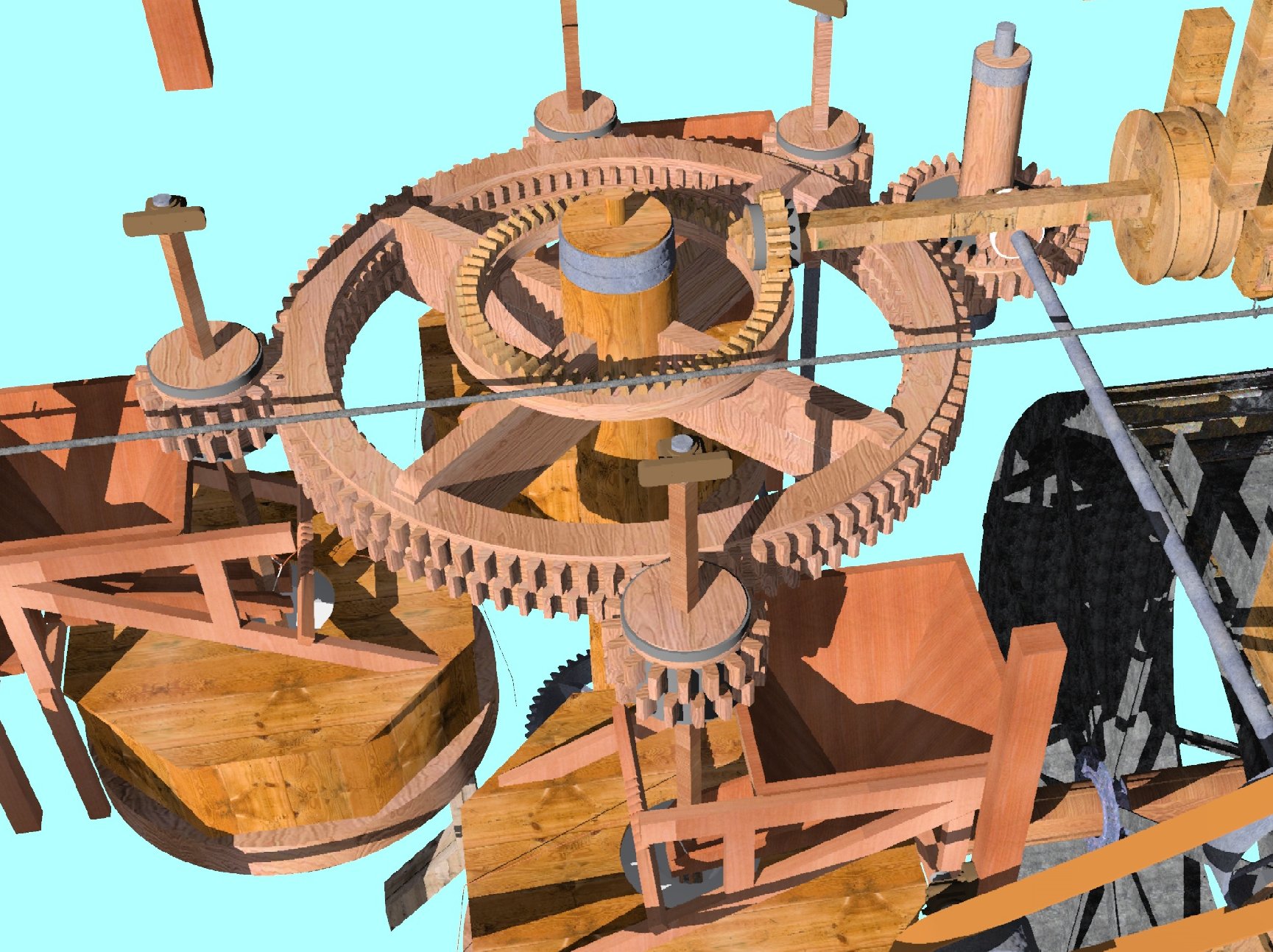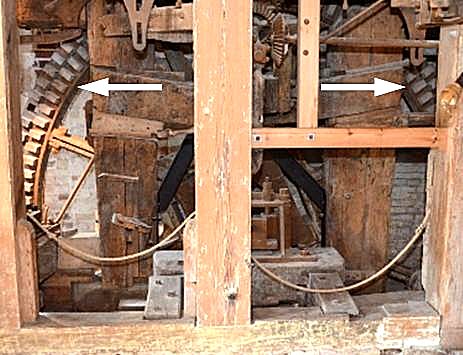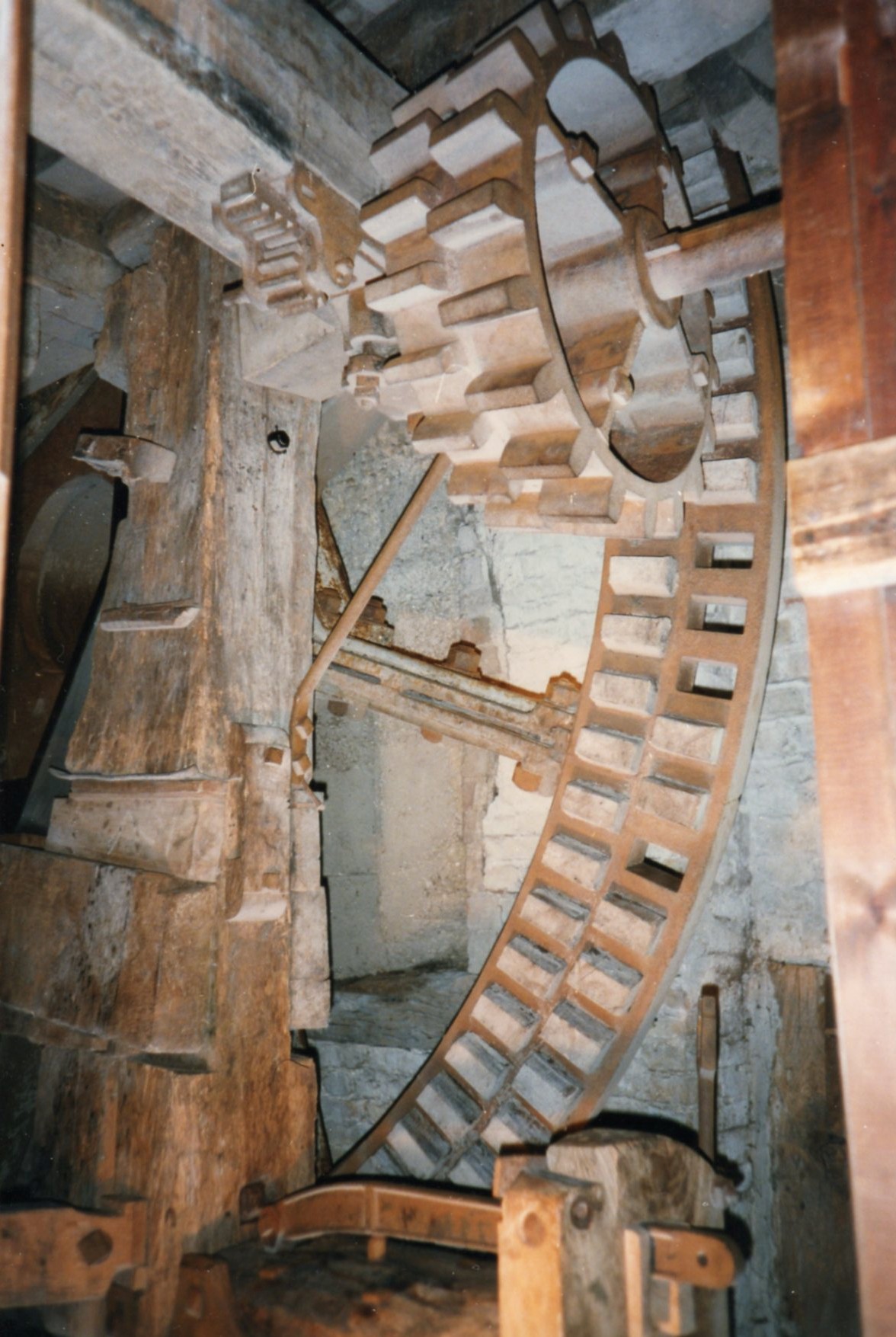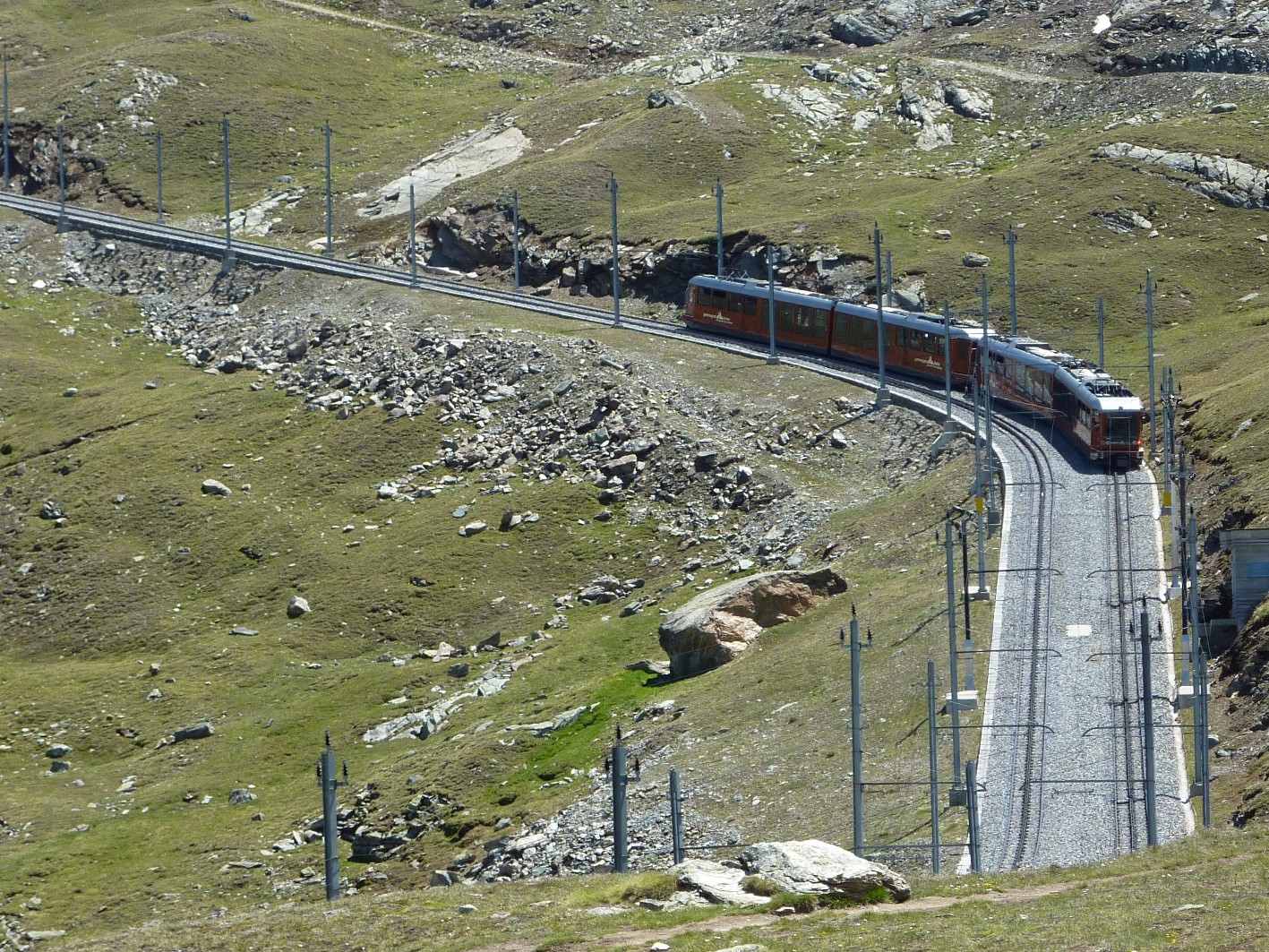|
   |
|
Page 5 |
Newsletter 113, Summer 2016 © Hampshire Mills Group |
Double
row of Alternating Cogs
Nigel
Harris
|
|

|
I wonder if HMG readers might be able
to help. I was browsing through John Brandrick’s
mill drawings on his website
(www.milldrawings.com)
and noticed that Rhydlydan Mill, Powys shows the
great spur wheel and some of the stone nuts, with
double rows of alternating cogs (left).
This arrangement is something I have
only come across once before and that was on the
very large pitwheel at Houghton Watermill,
Cambridgeshire (pictured below, left by Nigel
Harris, right by Ruth Andrews). |
|

John Bedington (ex Charlecote
Watermill) tells me that he has only once seen this
arrangement, on the brake wheel and wallower in the
windmill now at Madingley, Cambridgeshire (removed
from Ellington, Huntingdonshire). He also mentioned
that Rex Wailes, in “The English Windmill” seems to
treat this example as a one-off for windmills and
says ‘the brake wheel and wallower have two rows of
staggered cogs, evidently to avoid backlash’.
The double row of cogs would be
stronger than one row, but the point of staggering
the teeth would seem to be to reduce backlash in the
gears (that is, rattle, because of play between the
cogs). The double row would reduce noise and
possibly make the cogs less likely to break. It
would also have the same effect as having a finer
pitch of cog.
I suspect other examples may exist;
do let me know if you know of any.
nigel.harrismsc@gmail.com
|
 |
|
Editor’s note:
Keith
says that twin staggered teeth are a feature of the
Abt system of rack railways. It is used on the
Snowdon Mountain Railway and the Gornergrat railway
at Zermatt (illustrated), for example. As well as
the advantages that you mention, it also means that
the gear wheel on the locomotive and the rack (and
in the case of the mill, the two gear wheels) are in
more constant mesh, and therefore will be safer
because they are less likely to jump out of
engagement. (This is possibly more important in a
rack railway than a mill.)
|
 |
|
|
